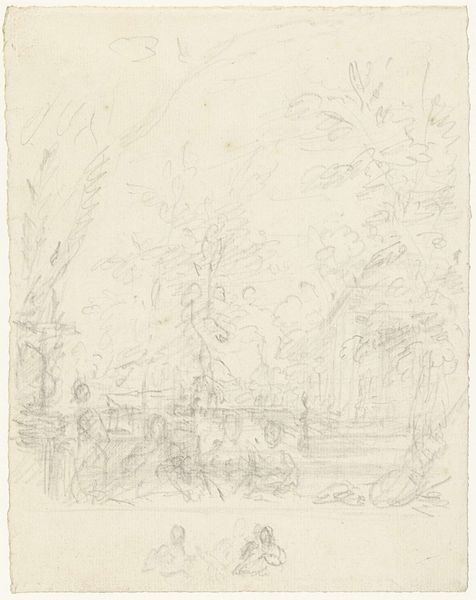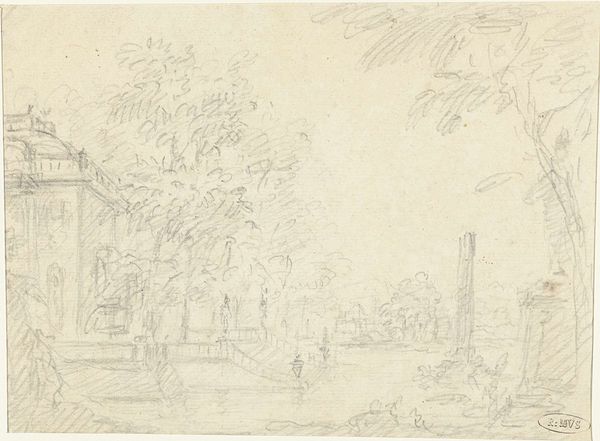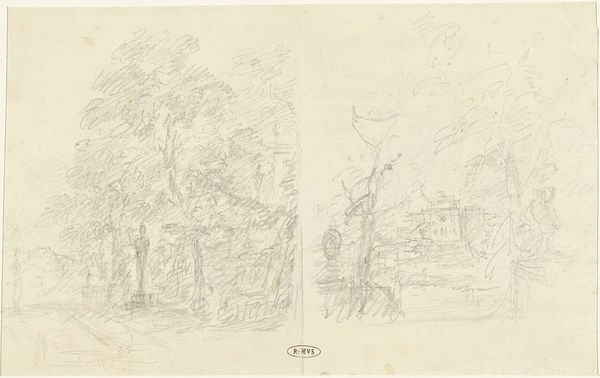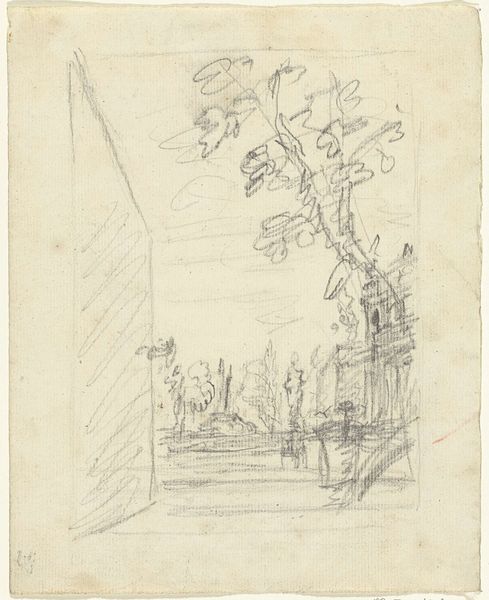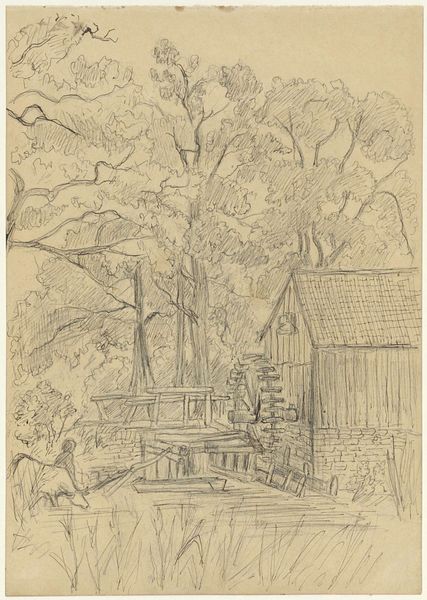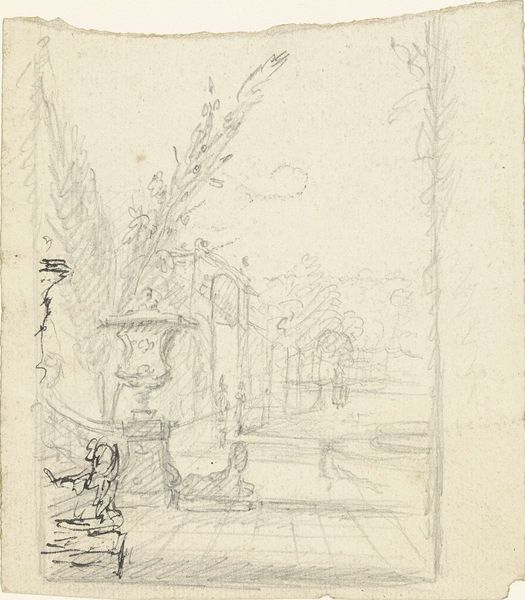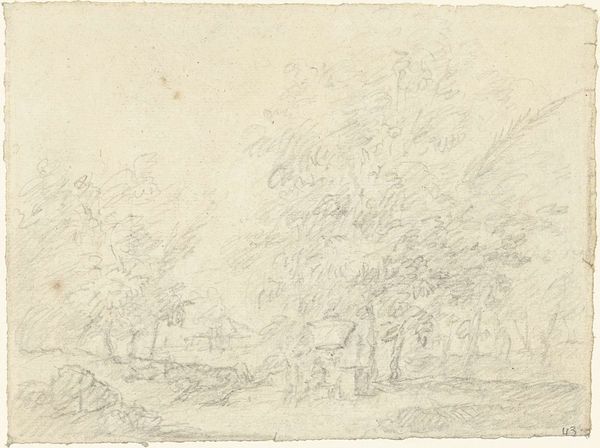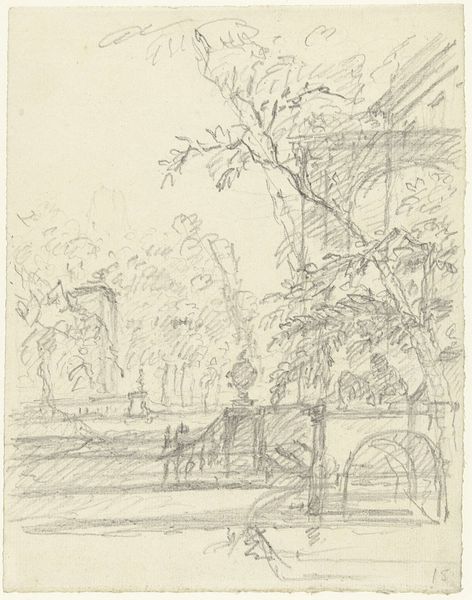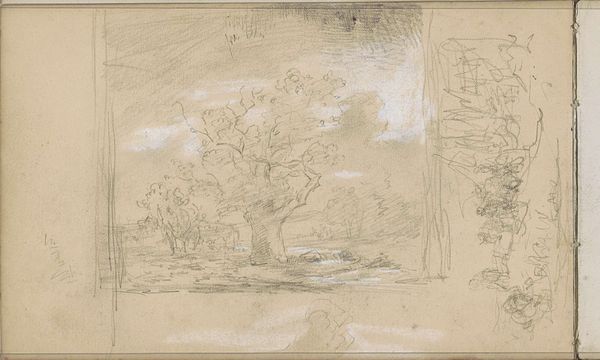
drawing, paper, pencil
#
drawing
#
neoclacissism
#
landscape
#
paper
#
pencil
#
15_18th-century
Dimensions: height 205 mm, width 120 mm
Copyright: Rijks Museum: Open Domain
Curator: This is “Two Sketches of a Garden Landscape” by Dionys van Nijmegen, dating from the late 18th century. It’s rendered in pencil on paper. Editor: My first impression is one of delicate serenity. The light pencil strokes evoke a dreamlike quality, almost like a fleeting memory of a garden. Curator: It's interesting to consider the availability of paper and pencils during this period. Van Nijmegen, being part of the artistic circles influenced by Neoclassicism, had access to these materials through burgeoning trade networks, marking a shift in artistic production and the rise of preparatory sketches. Editor: Yes, and the composition itself – the division into two distinct scenes, each with its own focal point – it leads the eye on a specific journey. Notice how the artist utilizes framing with trees and architectural elements? Curator: Absolutely. And the very act of sketching—quick, informal—reflects a shift in the artist's role. It becomes less about commissioned masterpieces and more about exploring ideas, capturing the fleeting beauty of a landscape. Was the paper handmade, laid, or wove? What was the artist trying to create and where did he get his supplies? Editor: The lack of detail also contributes. These aren't polished, finished works but more suggestions, which pulls us in, lets us fill in the blanks and construct our own imagined spaces. The weight and arrangement create balance as we perceive these structural spaces. Curator: The formal gardens represented hint at the social context of the time. Landscape design reflected hierarchies, a controlling hand over nature—something Neoclassicism celebrated but which also began to be challenged as industrialism impacted land and lives. These sketches become documents of land use. Editor: But even within that control, the sketches themselves breathe. The way the pencil dances across the page—you sense the artist's hand, their quick observations. Curator: Indeed, this glimpse behind the scenes reminds us that the artistic process and access to its components – pigment, supports, patrons – are just as much a part of the art as what’s visibly depicted. Editor: Precisely. It really changes the experience once you've peered beyond what first catches the eye. It offers a greater and greater respect to the artistry as time goes on.
Comments
No comments
Be the first to comment and join the conversation on the ultimate creative platform.
